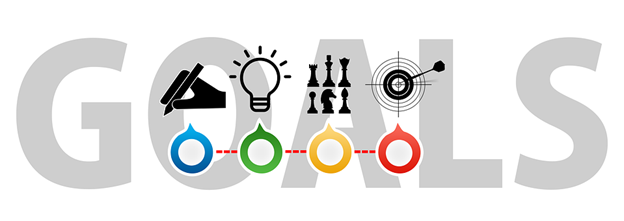A customer experience journey map should be the heart of your business. It is not about how you think the customer sees your brand and interacts with it, rather it should show how they interact with your products or services and provide a window into the pain points they are facing that prevent them from purchasing or investing in your services.
A customer experience journey map is literally a walk in the shoes of the customer so that you can identify the issues they encounter when dealing with your brand to improve the customer experience.
A good starting point is to conduct a business management operational audit or business process mapping to develop a high-level overview of customer touchpoints because this can guide the customer experience journey mapping process.
Benefits of A Customer Experience Journey Map
Customer journey mapping drives creation of more effective communication with the customer and can guide them in making decisions about the brand. Benefits of this mapping process include:

- A visual standardized framework employed by the company to document the customer journey
- Identifying and documenting the different stages of the customer journey
- Understanding how customers interact with the brand so communication can be targeted and improved
- Identifying the motivation behind how and why the customer decides to make a purchase
- Understanding the problems the customer would like to solve
- Identifying pain points that can be resolved to attract, convert, and retain potential customers
- Ability to tailor products and services to an expanded audience.
Stages of the Customer Experience Journey Map
Because there is no “standard” map, there is also no “standard” customer experience. The best maps are tailored to document the current status of your customer’s journey, through the customer’s eyes.
This helps identify where future resources need to be focused, cost-effective initiatives to implement to generate the greatest return on investment (ROI). The goal – to increase customer loyalty, retention and referrals.
The customer journey is usually divided into four stages. A careful analysis of each stage is key to mapping the customer interaction and engagement with brand. These stages are:
- Awareness
- Research and Consideration
- Purchase
- Opportunity for Retention and Referral
Category Questions To Develop For Each Stage Of The Customer Experience Journey Map
To adequately drill down with the right questions, a template incorporating these stages should first be created preferably through a team effort.
This should be followed by methodically generating a list of questions for each stage to understand the major challenges and touch points potential customers experience using four categories of questions:
- What activities does the customer engage in?
- What are their motivations?
- What questions do they have?
- How many touch points do they have with your brand?
- What barriers do they encounter or what complaints do they have?
Keep in mind that customer journey mapping is not a static exercise nor just another customer survey, but a powerful tool to help understand the customer. It will require fine-tuning as the business grows or introduces new products and services.
Important Criteria For Building a Customer Experience Journey Map – Customer Centric

Certain criteria must be followed in the design of the process maps. These are listed as Customer-Brand interactions, Customer Persona Development, Customer Goals and Emotions, and, Brand Delivery on Promise.
CUSTOMER – BRAND INTERACTIONS
The Customer Experience Journey Map Must Illustrate the Perspective of the Customer
The process map must reflect the customers’ experience as they see it, and not the way you think they see it. You may be pleasantly surprised to find that the customer fulfillment system you currently have in place does not adequately meet the customers needs or create a great experience.
This will include aspects related to indirect control, such as referrals, web search, social media influence, and other external steps taken by the customer.
Identify Customer Touch points
Wherever the customer and the company interact is referred to as a customer touch point. These include other activities over which you have little direct control, such as the social media, referrals, online research etc.
The results from the business management operational audit or business process mapping will help in this exercise.
DEVELOP CUSTOMER PERSONAS – CUSTOMER EXPERIENCE JOURNEY MAP
Focus on Your Ideal Customer: It is impossible to work on all customer perspectives, so only focus on your ideal customers.
Research the Customer: Begin with qualitative research to identify the customer’s touch points, their interactions and emotional responses, followed by other quantitative methods.
These latter methods include in-person, telephone, or virtual interviews, surveys, and evaluation of cultural trends and habits (ethnography).
Identify Customer Segments and Develop Personas: Different customers will have different experiences, therefore, when creating a customer journey map, you must identify and describe the customers whose journeys you plan to map.
Younger or senior demographics for example tend to interact differently. These two segments cannot be lumped together, because the result would not accurately reflect the experience of either segment.
It is suggested that you create customer personas that represent a typical customer experience. If your target market includes different types of customers, you can create personas for each type of customer.
A note of caution. Do not create too many personas as this will complicate the mapping process and make it less useful, rather create broad categories of personas to adopt.

CUSTOMER GOALS AND EMOTIONS
The customer journey map should illustrate what customers are looking to achieve at each stage of their experience, and whether these goals are met by the journey.
The way emotions play in the customer experience journey is important because they are tied to whether their goals are achieved and if they will buy or not.
Important Criteria For Building a Customer Experience Journey Map – Focus on Your Brand
BRAND DELIVERY ON PROMISE
Review and Assess Your Brand Promise
Customer journey mapping can reveal how your brand promise aligns with the actual customer experience you’re providing, as well as how to fix issues if you’re falling short.
Measure Length of the Customer Experience Time
The length of a customer experience provides key information. Did they have a 30 seconds or 10 minutes call? Did the customer make a quick decision to purchase, or did it take them an hour, one week, or several weeks ?

Conclusion
A customer experience journey map portrays how the customer sees your brand and how they decide to interact with it. Mapping each step helps optimize how the customer interacts with your products or services.
Furthermore, it provides a window into their pain points from which opportunities for improvement can be found.
Are you tired of the drip, drip, drip of losing customers? If the customer experience was poor, customers will not be loyal to your brand because of their dissatisfaction. Discover how these processes can be improved. Need Assistance?:
References
Salesforce 2020. What Are Customer Expectations, and How Have They Changed? https://www.salesforce.com/resources/articles/customer-expectations/

